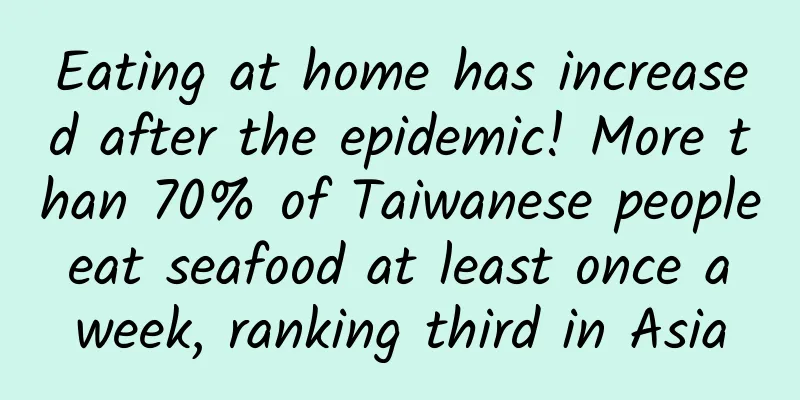Eating at home has increased after the epidemic! More than 70% of Taiwanese people eat seafood at least once a week, ranking third in Asia

|
After the epidemic, people whose lives are gradually returning to normal are paying more attention to their health. In addition to pursuing a diet with high nutritional value, people are also paying more attention to the natural environment and sustainable development. Seafood (marine biological protein), a protein source that complies with the principles of sustainable marine fishing and has more nutritional value than meat, has become a trend for modern people to take care of themselves and the environment. According to the survey, Taiwanese consumers have a clear love for seafood, with 77% of Taiwanese eating seafood at least once a week, which is a very high proportion in Asia, second only to Japan and Vietnam. The proportion of eating at home has increased after the epidemicAccording to the Norwegian Seafood Marketing Council's seafood trend report, the epidemic has affected global eating habits, causing more people to choose to eat at home. Due to the impact of inflation and rising costs in recent years, an increasing proportion of people choose to eat at home instead of eating out frequently. According to the association's survey, the proportion of salmon consumed at home in many countries exceeds 70%, which also illustrates the mainstream trend of changes in the dining places and eating habits of the modern public. After the epidemic, consumers pay more attention to the origin of seafood"After the epidemic, people are paying more attention to the impact of their lifestyle choices and striving for better health. For seafood, knowing its origin is crucial to its quality. This is the key message we emphasize globally: Origin matters." According to the association's survey, 81% of Taiwanese consumers believe that it is very important to clearly label the origin of fish and seafood products. The same phenomenon of paying attention to the source of seafood is also seen in Portugal and the United States, at 72% and 62% respectively. Taiwanese consumers’ love for seafood is evident, with 77% of Taiwanese eating seafood at least once a week, a high percentage in Asia, second only to Japan and Vietnam, and 96% eating fish/seafood weekly. Taiwanese consumers’ love for seafood is evident, with 77% of Taiwanese eating seafood at least once a week, a high percentage in Asia, second only to Japan and Vietnam, and 96% eating fish/seafood weekly. When it comes to choosing a channel for purchasing seafood, 89% of Taiwanese consumers care about whether the channel can provide a variety of seafood options; and 85% of consumers value whether the channel provides seafood products from sustainable sources. |
Recommend
How to treat high prolactin to get pregnant
How to treat hyperprolactinemia? It is necessary ...
What can't I eat if my endometrium is thick?
What should you not eat if you have thick endomet...
What causes headache and nausea on the first day of menstruation?
What should I do if I have a headache and nausea ...
Avoid eating too much and getting fatter! Do you know the three major fattening landmines of breakfast?
A day's plan begins in the morning. Breakfast...
Ovarian cysts are a bit painful, what should I do? What diets can improve it?
What should I do if my ovarian cyst hurts? What d...
Jujube and motherwort soup can effectively regulate menstruation
Traditional Chinese medicine believes that irregu...
Thin waist and legs like this! 5 minutes to firm your muscles
If you want to slim down your legs and waist, you...
4 low-calorie healthy snacks with olives that are sweet and good for your stomach
During the Chinese New Year reunion party, it is ...
Hiding in the last row in the group photo, unable to lose weight and hiding her figure anymore!
Modern people are quite dependent on the Internet...
Treatment of congenital absence of vagina
What are the treatments for congenital absence of...
What are the obvious early symptoms of dysmenorrhea?
Dysmenorrhea is a common gynecological disease. M...
The clinical manifestations of irregular menstruation are mainly reflected in the following aspects
Irregular menstruation has been bothering women f...
What should not be eaten for endometrial tuberculosis
For patients with endometrial tuberculosis, a goo...
What is the best medicine for multiple uterine fibroids? What is the best treatment for multiple uterine fibroids?
What is the best medicine for multiple uterine fi...
What does an egg-sized uterine fibroid look like? Does an egg-sized uterine fibroid need to be removed?
What does an egg-sized uterine fibroid look like?...









